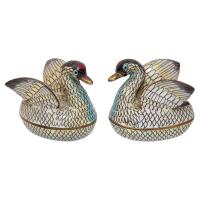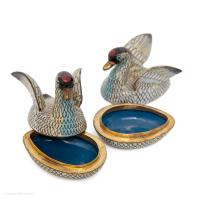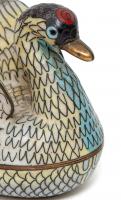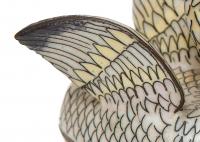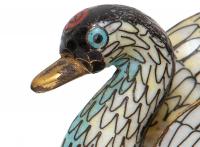
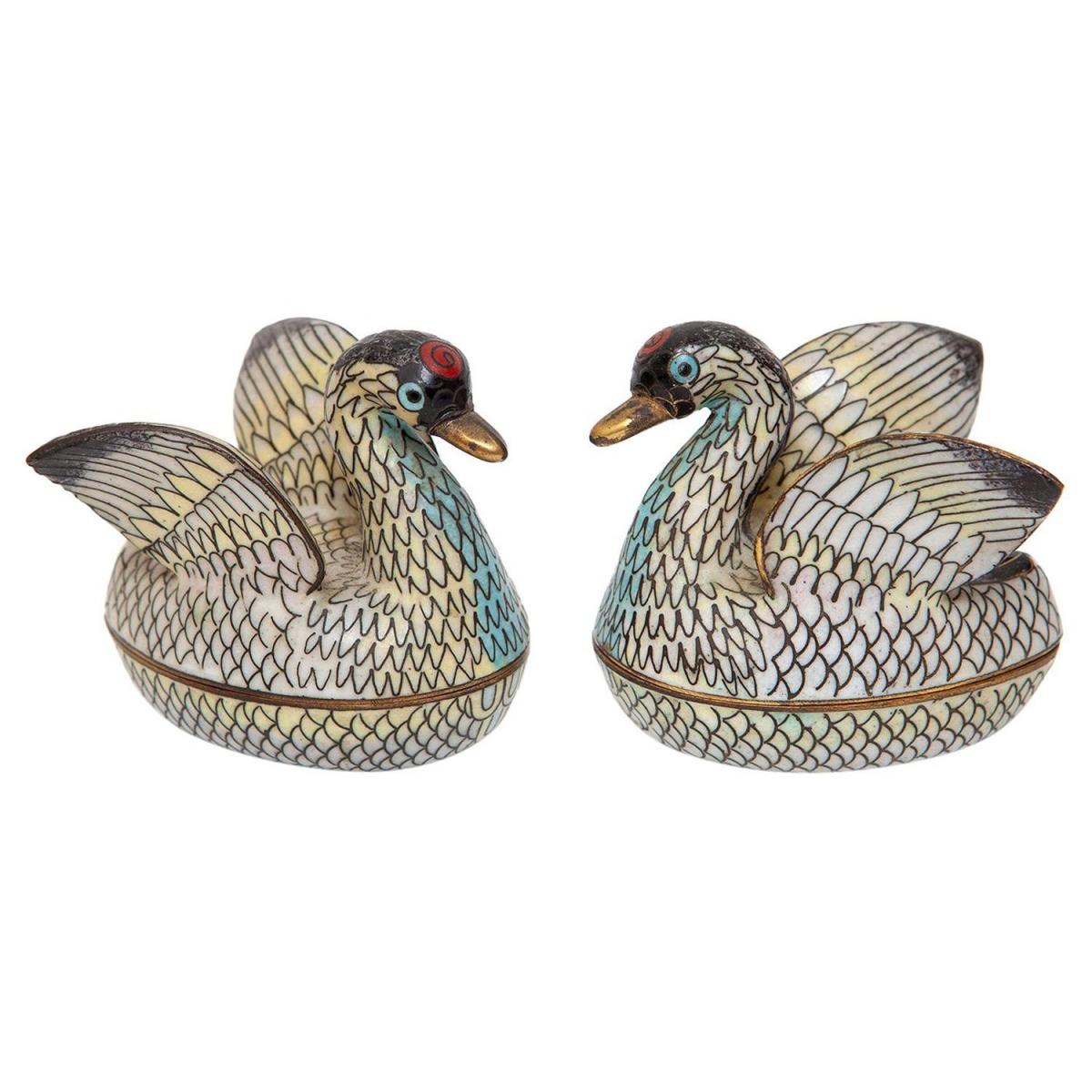
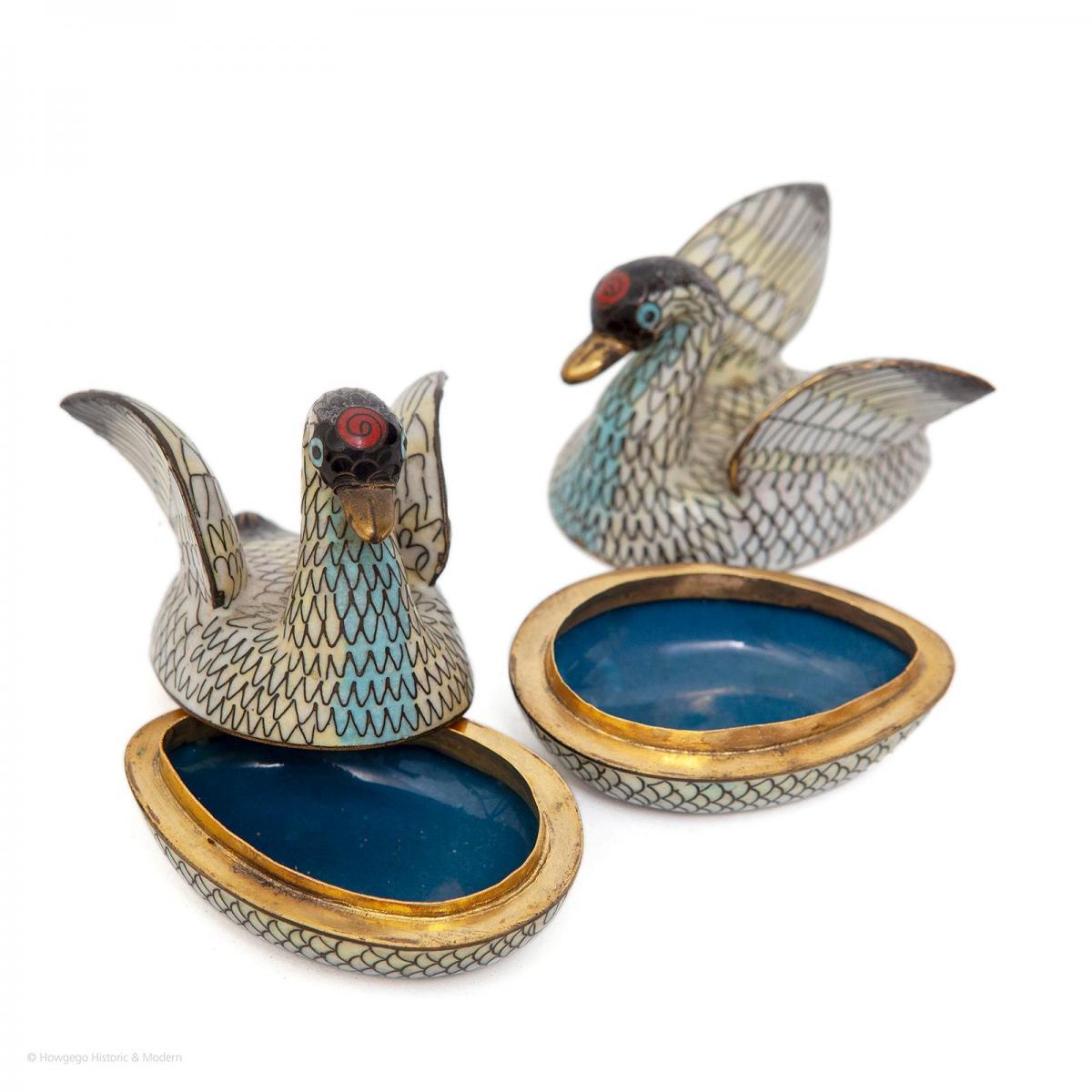
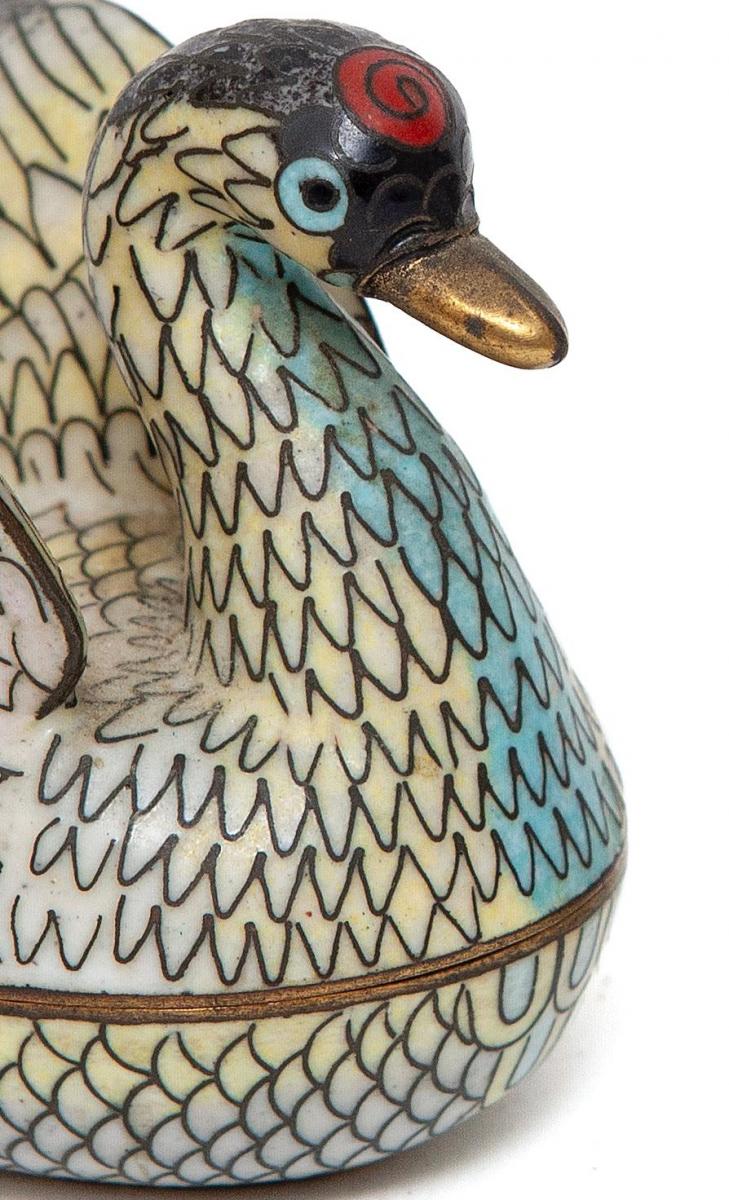
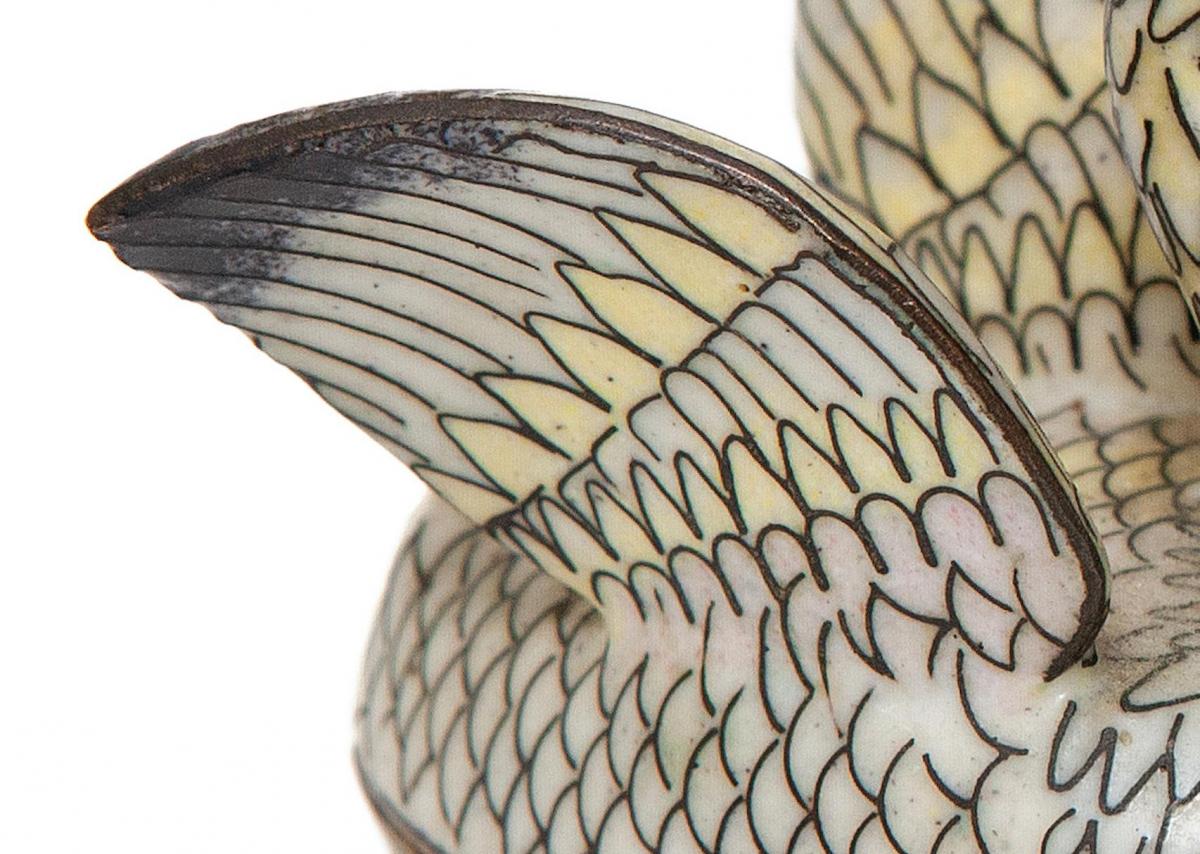
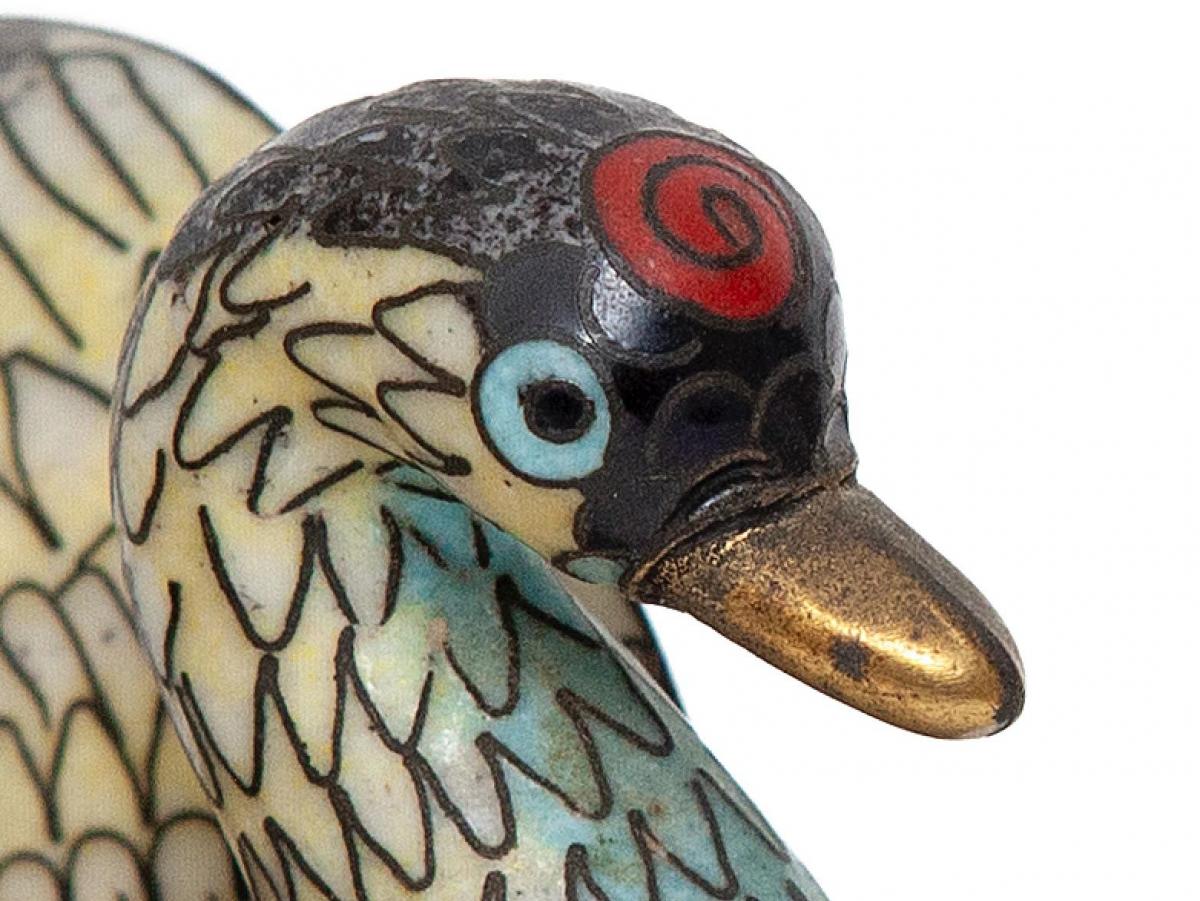
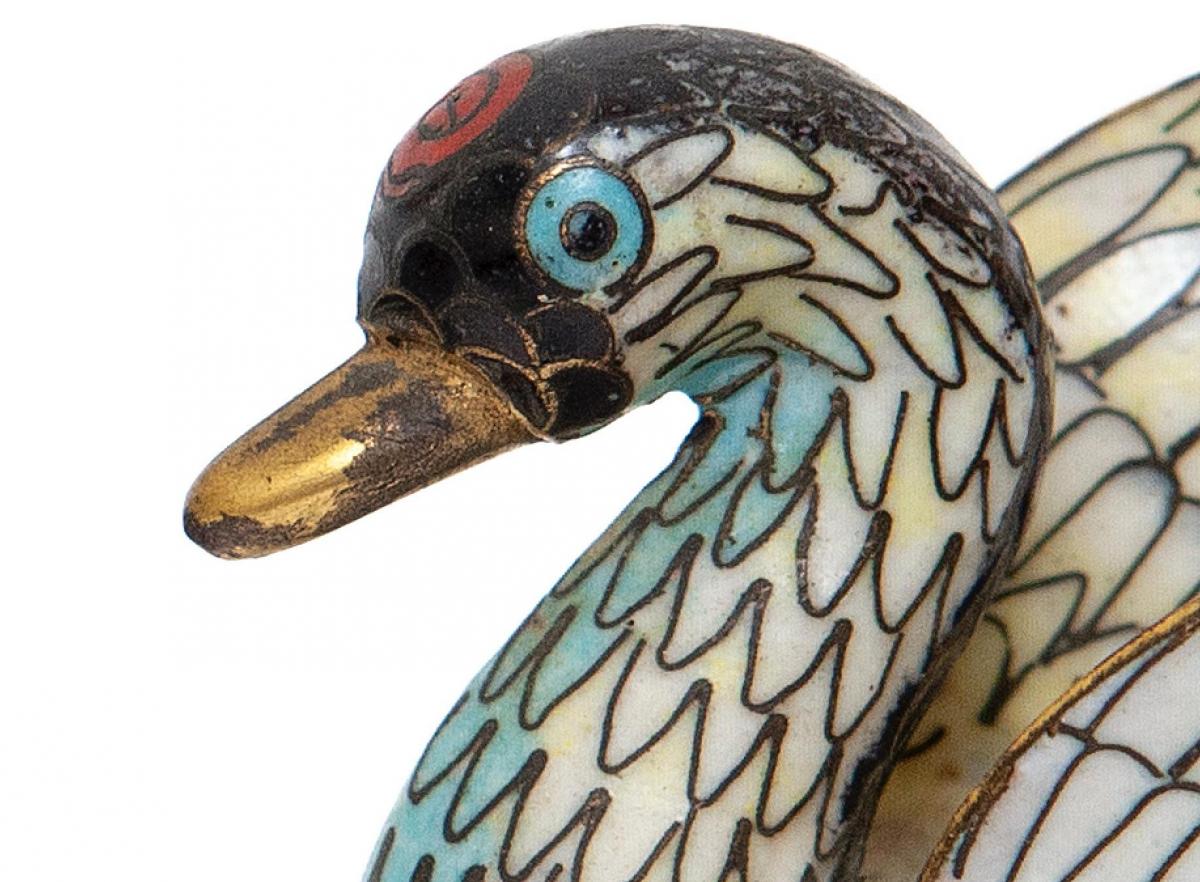
This object is eligible for a Certificate of BADA Provenance
The BADA Standard
- Since 1918, BADA has been the leading association for the antiques and fine art trade
- Members are elected for their knowledge, integrity and quality of stock
- Our clients are protected by BADA’s code of conduct
- Our dealers’ membership is reviewed and renewed annually
- Bada.org is a non-profit site: clients deal directly with members and they pay no hidden fees
Japanese Cloisonné Swan Jewelry Boxes.
- Once courtship is complete, male and female swans bond for life and this delightful pair of Japaneer cloisonné swans symbolize love and constancy, representing soul mates for life. Swans also symbolize grace, beauty, trust, loyalty, inner beauty and self-love.
- They are a miniature size, probably made to hold rings given between lovers or husband and wife.
- Made between 1880 and 1910, the peak of artistic and technological sophistication, the ‘Golden Age’ of Japanese cloisonné enamels, during which superb pieces were made for display at the great world exhibitions of that time as well as for general export.
Japan, circa 1900
Cloisonné is a way of enameling an object, (typically made of copper) whereby fine wires are used to delineate the decorative areas (cloisonné in French, hence cloisonné) into which enamel paste is applied before the object is fired and polished. The Japanese characters used for the word shippo (the Japanese term for enamelware) mean 'Seven Treasures'. which is a reference to the seven treasures mentioned in Buddhist texts.
Although these treasures may vary, they generally included at least some of the following: gold, silver, emerald, coral, agate, lapis lazuli, giant clamshell, glass and pearl. The Japanese applied this expression to the rich colors found on Chinese enamel wares and later to those they made themselves.
Cloisonné enamels in Japan had traditionally been used only as small areas of decoration on architecture and on sword fittings, circa 1833 a former samurai, Kaji Tsunekichi of Nagoya in Owari Province (modern Aichi Prefecture), like many other samurai of that time, was forced to find ways to supplement his meagre official income. It is believed that Kaji obtained a piece of Chinese cloisonné enamel and took it apart, examined how it was made and eventually produced a small cloisonné enamel dish.
By the late 1850s he had taken on pupils and was appointed official maker to the regional warlord of Owari province. There was a huge increase in the production of cloisonné enamel ware following the ‘reopening’ of Japan in the 1850s and the ensuing obsession in the West for all forms of Japanese art.
Nagoya and the surrounding area became renowned for innovations in the production of highly decorated cloisonné objects. Kyoto and Tokyo soon followed as major centers of production and cloisonné enamels became very desirable objects in the West. From tentative beginnings in Nagoya in the 1830s, by the end of the 19th century the art of cloisonné enameling had expanded to become one of Japan’s most successful forms of manufacture and export.
Dimensions
6.00cm high (2.36 inches high), 6.00cm wide (2.36 inches wide), 5.20cm deep (2.05 inches deep)The BADA Standard
- Since 1918, BADA has been the leading association for the antiques and fine art trade
- Members are elected for their knowledge, integrity and quality of stock
- Our clients are protected by BADA’s code of conduct
- Our dealers’ membership is reviewed and renewed annually
- Bada.org is a non-profit site: clients deal directly with members and they pay no hidden fees


